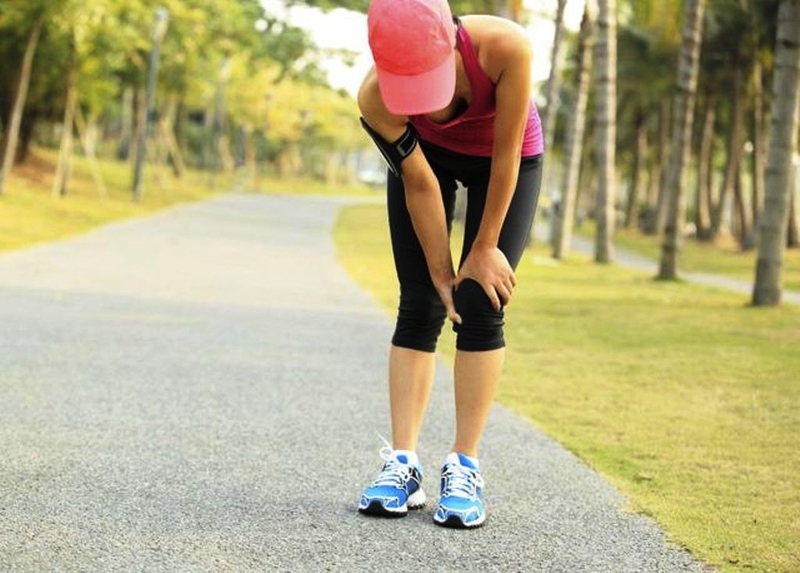Posterior knee pain, also known as pain behind knee, is a medical problem that should be given serious attention. This condition may develop either gradually or abruptly. The gradual occurrence may be an indication of underlying knee conditions while abrupt occurrence may be due to an injury. Some of the common symptoms may include achy or sharp pain at the back of the knee and swelling in the leg areas, causing restricted movements. Posterior knee pain may be caused by several factors. After knowing the causes, the doctor can treat your problem accordingly.

What Causes Posterior Knee Pain?
Hamstring Injury
This is the inflammation caused by the tearing of one of the tendons, particularly biceps femoris tendon, present in the hamstring muscles. The pain is usually sudden and is localized to the back of the knee, specifically in the area where the tendon is attached to the bone. Initially, the pain may become a dull ache which can quickly intensify with sudden movements. In some cases, mild swelling can be observed behind the knee.
Meniscus Tear
This involves a tear in the menisci, a two crescent-shaped cartilage, caused by a sudden twisting or a long term overused knee. The tearing of this cartilage can cause severe pain and swelling. Difficulty in movements such as knee extension may be observed. A “locking” sensation in the knee may also be experienced.
Posterior Cruciate Ligament (PCL)
This injury is caused by a sprain or a tear in the PCL, which is known to be the strongest ligament that helps provide stability to the knee. The injury may occur when overextension or extreme blow of force is applied. Swelling and pain may be observed together with the instability of the joint. A concomitant injury such as knee dislocation may also occur.
Osteoarthritis
This disease involves the degeneration of the cartilage which is known to provide cushioning between the bones and the joints. It normally occurs in weight-bearing joints like the knee. Pain, especially in the back of the knee, can be observed, which often worsens at night. Stiffness and swelling may also be present.
Rheumatoid Arthritis
This is an inflammation that occurs when the immune system attacks the lining of the joints, causing distortion and destruction of the affected areas. Pain is usually observed and worsens in the morning. Swelling and stiffness may also be experienced.
Gout
This is characterized by the build-up of uric acid in the blood. This waste product can form crystal deposits in the joints, causing pain and flare. Pain behind knee is experienced when these deposits are stored in the knee area. Redness, warmness, and swelling may also be observed in some cases.
Popliteal Cyst or Baker’s Cyst
This condition is characterized by the localized swelling behind the knee which usually occurs secondary to an injury or inflammatory disease. The swelling is caused by the building up of the fluid in the knee joint, leading to a ball shaped protrusion behind the knee. Some may be painless while others may experience pain. A decrease in motion and speed may be observed with persons suffering from this condition.
Deep Vein Thrombosis (DVT)
This involves a blood clot that develops in the vein. It is often observed in large veins present in the thigh and calf. Localized pain may occur behind the knee combined with swelling, redness, and tenderness. At times, DVT may be life threatening due to the possibility of blockage in the lung artery caused by the movement of the clot.
What to Do for Posterior Knee Pain
PRICE
Immediate treatment for several injuries may involve a combination of different actions known as PRICE. This may be done to control the amount of swelling, reduce pain, and prevent further straining.
Protection: Protection to avoid further injuries
Rest: Resting the knee
Ice: Icing the back of the knee
Compression: Compression knee bandages or braces
Elevation: Elevation of the knee
Over the Counter Medications (OTC)
OTC drugs effectively help reduce the inflammation and help relieve pain. Some of the most common OTC NSAIDs for treating pain behind knee include aspirin, ibuprofen, and naproxen.
Wearing Knee Braces
Knee braces are supports worn to help reduce pain in the knee and increase the ability to walk easily and comfortably. It may come in a variety of designs and are usually made from a combination of rigid and highly flexible materials.
Exercise
Performing simple exercises can make the muscles stronger and more flexible, allowing better support to the knee.
Physical Therapy
Physical therapy exercises may help strengthen the leg muscles and reduce pain, swelling, and stiffness.
Weight Loss
Weight loss will help relieve the excess stress in the joints, reduce overall pain, and improve the mobility of the person.
Cortisone Injections
Cortisone injections or steroids are used to help reduce the pain and the inflammation caused by the cyst.
Surgery
Surgery procedures are done when a large and painful cyst is present or surgical repairs are needed.
For the best treatment for pain behind knee, consultation from a medical practitioner is highly recommended.
View All Comments /Add Comment